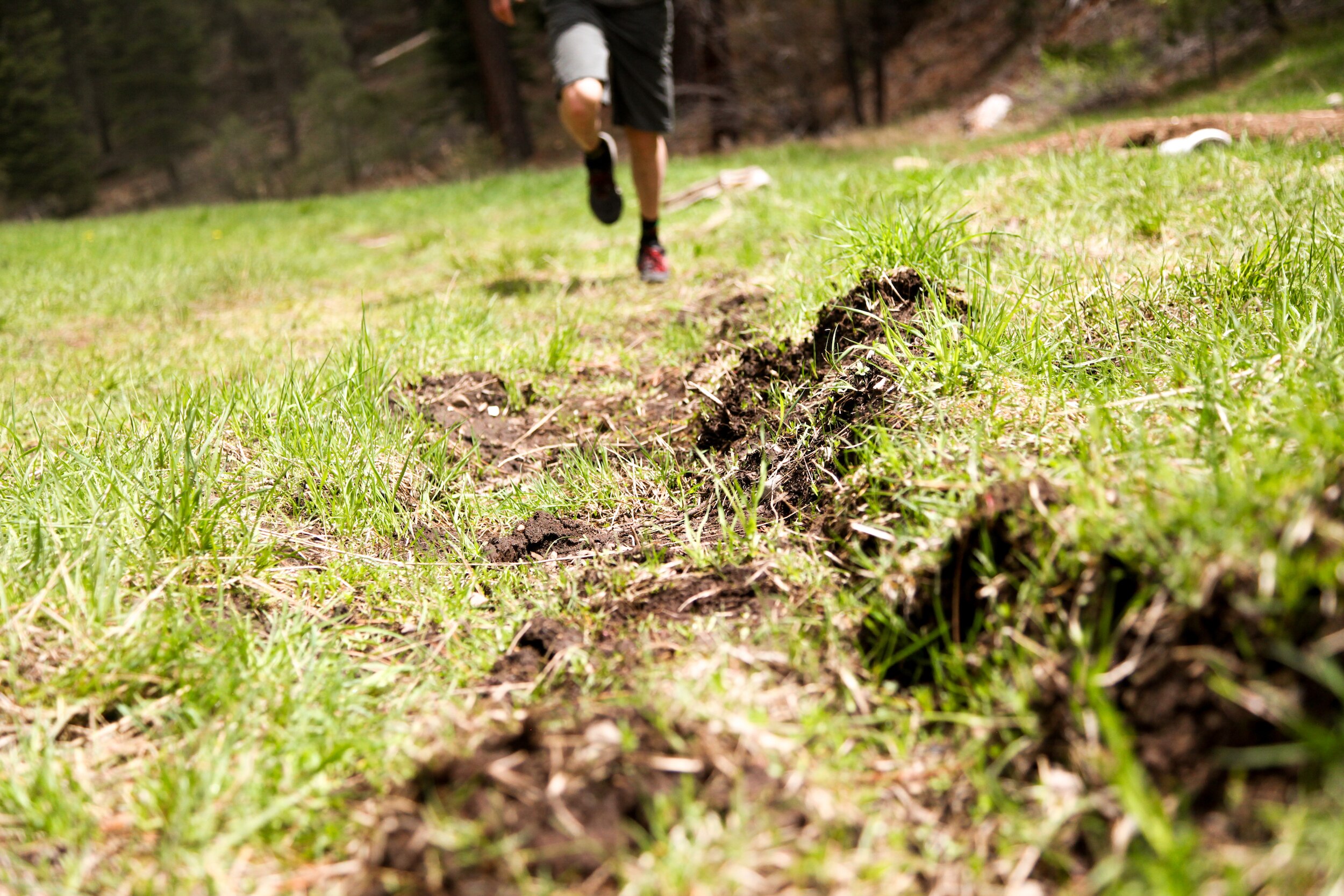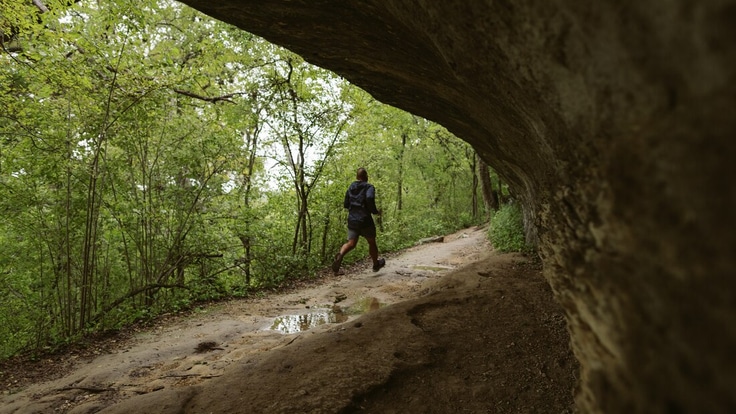When I moved to rain-soaked Seattle from the dry, red-rock foothills of Boulder, Colorado, one of the biggest adjustments—besides never leaving the house without a rain jacket and buying a commuter bike with fenders—was learning how to run on wet trails.
I remember driving out to Cougar Mountain Regional Wildland Park, just outside of Seattle, for a trail run with a friend on a cool, drizzling Saturday morning. The trails were damp but passable, with the occasional puddle you had to either run through or jump over, but the slippery tree roots, like invisible waterslides in the middle of the trail, were the most problematic. I ended the run with soaked socks and mud splattered up my legs. I quickly learned to leave a towel in the car to clean up before the drive home.
It didn't take long to realize that if you didn't trail run when it was wet in Seattle, then you might never run. So instead of calling it quits every time it rained, I learned to love running in the mud. Getting dirty and stomping through puddles became half the fun. I don't live in the Northwest anymore, but I still love a good muddy trail run, thanks to my time spent in Washington. Recently, while on a soggy, spring run through the woods in California, I got to thinking: There must be some way to make running in the rain and mud a little easier. So I called up some people who might have some answers for me.
First, I hit up professional runner Lauren Fleshman, who lives in Bend, Oregon. She told me running in the mud can be super fun, depending on the trail. "In places where the dirt has more clay, running in muddy conditions can actually damage the trails for other users. So check to see if there are any guidelines in your area, official or unofficial, before using the trails in wet conditions," Fleshman said. (You can check the website of your state park or local trail system for guidelines.) "If your trails just get nice dirty puddles, you're probably good to go. Don't bother running around puddles, just head right through the middle and get soaked. It's more fun that way."
If you run straight into puddles, your shoes get wet, right? What do you do then? So next, I reached out Braden Van Dragt, an avid trail runner and content producer for REI. He said there are two ways to go when it comes to getting the right shoes for wet conditions: You can either try to block water with waterproof shoes or you can surrender to soggy conditions with shoes that drain well and invest in some good socks. "Either way, you'll want an outsole with deep, widely spaced lugs," Van Dragt said. "Deep lugs give you the best traction in soft, slick mud and having them widely spaced ensures that they'll shed the mud and it won't end up caked in between the lugs, completely erasing your traction."

For waterproof trail-running shoes, he likes those with grippy rubber outsoles and larger lugs, and many have GORE-TEX® to ensure that water won't soak through the fabric. For non-waterproof shoes, look for stable construction, grippy outsoles and uppers made with materials that drain efficiently like mesh. "Your feet will get wet, but that water won't be trapped in the shoe," he said. Add a trusty pair of wool running socks, and your feet will stay warm and
"The most important thing when choosing a running shoe is always fit, and this is doubly true when you're running in wet conditions," said Van Dragt. "Any fit issue will be exacerbated by the wetness, so make sure you go with whichever shoes fit best. I recommend going into the store to get help from one of our many shoe-fit gurus."
With wet shoes, one thing seems inevitable: blisters. Fortunately, I knew just who to ask about that. John Vonhof is the author of the book "Fixing Your Feet: Injury Prevention and Treatments for Athletes" and a former ultrarunner who now works in the medical tent at races like Western States and Badwater. "If the mud is wet or it's raining, your feet will get wet. Wear good socks," Vonhof said. "Mud can be an irritant that can lead to hot spots and blisters. Gaiters will help cover the tops of shoes and keep some mud from going in." Many brands make lower-profile gaiters for trail running.
Lastly, I figured there must be some techniques for running more smoothly along muddy trails. So I asked Flagstaff, Arizona-based ultrarunner Rob Krar, who says he usually runs in dry conditions, but that the Southwest does have a monsoon season in the late summer. "I actually really enjoy running in the rain," Krar said. "The smell can be euphoric and the powder dry trails turn tacky and fast."
Krar said running in mud can feel like running in sand, like you're not making much progress. "It seems counterintuitive, but relaxing your effort can result in either maintaining the same speed or a minimal loss of speed with a significantly lower effort," he said. "Take noncommitting and shorter strides on descents. Think soft steps that allow you to respond quickly if you do feel yourself slipping. Use your upper body and arms to stabilize yourself."
Sure, you're probably not going to run your fastest time ever on days when the trail is littered with puddles, but it'll be a run you remember. Says Krar, "Adjust your expectations. A wet, slick and muddy race is likely not the best day to shoot for a personal best. That's not to say it can't be a memorable day—adverse conditions are character building and often are the races you end up reminiscing about years later."
